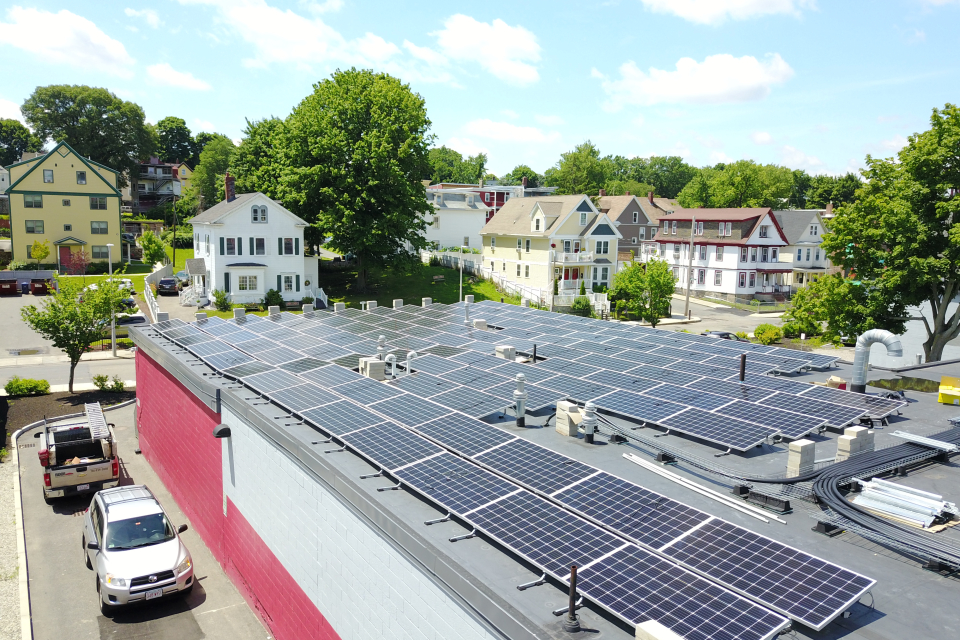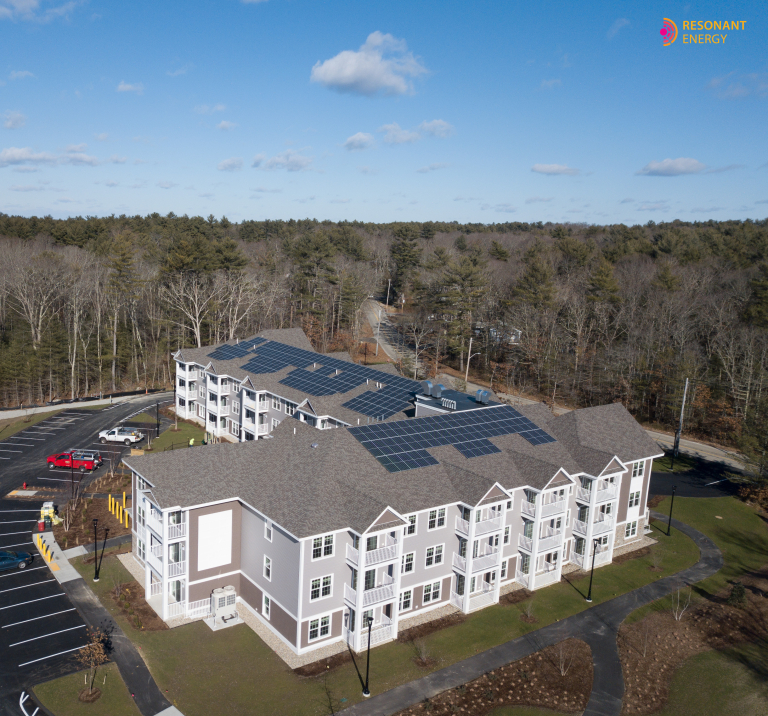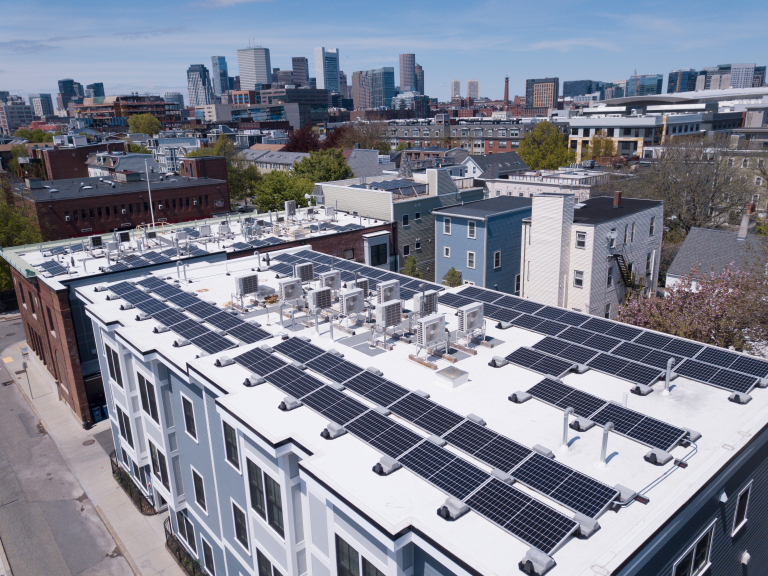
One of the best parts of the EmPower Massachusetts Program (referred to in this blog as “EmPower Mass” or the “Program”) has been seeing the progress and achievements of our awardees. As promised in our last post, as we continue with the Program, we will be highlighting the work of our awardees as they navigate challenges and build towards reaching new milestones. For our first project spotlight, we are excited to introduce you to the Solar Technical Assistance Retrofit (STAR) Program Phase II (or “STAR II”), led by lead applicant and EmPower Implementation Grant awardee: the Local Initiatives Support Corporation (LISC), in partnership with the Massachusetts Association of Community Development Corporations (MACDC) and Resonant Energy (collectively referred to as the “Project Team”).
Project Team
LISC is a national non-profit that offers expertise and relationship-building opportunities for community organizations to attract the kinds of resources from federal and state governments, foundations, and for-profit companies that allow them to do their best work. LISC first established a presence in Massachusetts in 1981. Since then, they have been investing in communities throughout the Commonwealth by providing financial support and technical and management assistance to local partners and developers. MACDC, founded in 1982, is a 501(c)(3) non-profit membership organization that works to advance racial and economic equity throughout the Commonwealth by supporting community development initiatives through private and public investment and public policy. Resonant Energy, established in 2016, similarly works to promote equity by providing financially feasible solar photovoltaic (PV) technology to mission-based organizations, with a focus on affordable housing developments, schools, and faith-based institutions.
STAR-II Project
With the EmPower Mass Implementation Grant Opportunity, which awards funding to organizations to implement innovative program models or projects, the Project Team plans to continue work on their innovative STAR Program in its second phase. The program was initially launched in 2021 as a pilot with the support of the Jampart Charitable Trust and individual contributions, designed to provide technical assistance to affordable housing owners who were interested in installing solar PV on new and existing buildings in their portfolio. The first phase of the STAR program saw ten (10) of the fifteen (15) participating affordable housing owners move forward with a planned 1.7 megawatts (MWs) of solar projects across sixty-six (66) rooftops in Massachusetts, surpassing the first phase’s 1-MW goal. After seeing early success, the Project Team set out to scale up the program with a second phase to reach more affordable housing owners.

The goals of the STAR program are to increase clean energy access and reduce the economic burden of clean energy for low-income and Black, Indigenous, and People of Color (BIPOC) residents of affordable housing. Through EmPower Mass funding, the Project Team intends to amplify these efforts by expanding the initial reach of the program to provide technical assistance, financial support, and guidance to a group of nonprofit and for-profit affordable housing developers that in total manage many more buildings than the participants in the first phase of the STAR Program.
Progress Report
In the months since funding was awarded, the Project Team launched STAR II and has selected 15 participants made up of community organizations, non-profits, and for-profit housing developers across the state. Community Development Corporations (CDCs), which often provide a range of services beyond housing, were given priority in the application selection process due to their relatively smaller staff sizes and the outsized impact they have in limited resource communities. Other selection criteria included locality in a geographic area with more favorable solar incentives and larger affordable housing developers (with 1000+ units) that could serve to demonstrate opportunities for solar PV technology to be adopted at scale.
The next step for STAR II is to complete solar PV feasibility studies with the fifteen (15) participants. Five (5) of these studies have already been completed with the following organizations: B’nai B’rith Housing, Beacon Communities, Hilltown CDC, Housing Assistance Corporation, and Veterans Benefit CDC. As reported in feasibility studies completed to date, there is a potential for over one hundred (100) solar PV installation sites that could account for an astounding three (3) MW of potential direct current (DC) energy from solar PV. This is the same amount as the total program goal that the Project Team established of three (3) MW DC of energy from solar PV. Based on Resonant Energy’s past experience, only 30-40% of projects analyzed turn into projects, so the Project Team is hoping they’ll be able to complete analyses for seven to nine (7-9) MWs in total for STAR II participants in order to find three (3) MWs worth of projects that will end up moving forward in the process.
B’nai B’rith Housing and Veterans Benefit CDC have both signed letters of intent for installation of solar PV panels across twenty-two (22) sites, representing a total of five hundred fifty-one (551) kilowatts (kW) DC worth of solar PV or about a quarter of the two (2) MW DC total of the potential DC energy reported from the five completed feasibility studies. This represents an estimated lifetime savings for the affordable housing owners of over $2.1 million!

Challenges & Opportunities
LISC, MACDC, and Resonant Energy are doing important work to ensure that the implementation of clean energy into affordable housing communities is both equitable and economically feasible. The Project Team has been open about this being an imperfect process at times. However, this has presented an opportunity for the Project Team to develop and document key strategies to overcome some of the major barriers associated with this type of project. One of the biggest challenges noted has come from financing, such as coordinating with equity investors and lenders, and managing and complying with the different requirements for each investor type. Because so many different funders are required to help make an affordable housing development come together, it can be complicated to make changes to the building once it’s in operation due to the need to secure consent from each funder.
Additionally, the Project Team has been working to address challenges associated with the low incentive value remaining for solar PV in Western Massachusetts under the Solar Massachusetts Renewable Target Program (SMART) and those presented by the single parcel rule. The Project Team has overcome this by taking advantage of new opportunities that recent updates to the SMART Program policy present. For example, utilizing the benefits from the new “Small Commercial Carve-Out.” This “carve-out” was added to the commercial blocks (i.e., system sizes 25-250kW-AC or “Alternating Current”) so that incentives for this system size range would step down more slowly thus offering more time to develop projects with better economics. This strategy has produced favorable results as far as addressing financial feasibility concerns with solar PV installation in affordable housing and, in this way, has the potential to open doors for future investment into these communities.

The Project Team has been engaged with policy makers to raise concerns and address challenges with making solar PV a financially viable option for owners of low income and affordable housing. Affordable housing portfolios in Western Massachusetts, in particular, face challenges stemming from needing multiple installations on single parcel to serve their entire portfolio but are limited to one interconnection per the Single Parcel Rule. The Project Team has worked to advance viable solutions for many of these challenges.
Given the Commonwealth’s clean-energy goals, projects such as STAR II are vital for strategizing on methods for providing clean energy to every community within the state, regardless of economic ability. The EmPower Team is looking forward to seeing the future work the Project Team will implement towards reaching not just these climate goals, but also for making clean energy more equitable by reducing both energy and economic burden.
What’s Next from EmPower
What’s coming next? Look out for more blog posts highlighting the progress and experiences of our awardees and their projects. In particular, for our next blog, we’ll share the work and achievements of the Worcester Healthy, Equitable, Affordable Retrofits, & Training (HEART) Coalition and their partners.
Do you have thoughts on what else you’d like to see MassCEC do with the EmPower Massachusetts Program? We encourage readers to reach out to our team with questions, suggestions, or to be added to our EmPower email list. You can email us at empower@masscec.com.